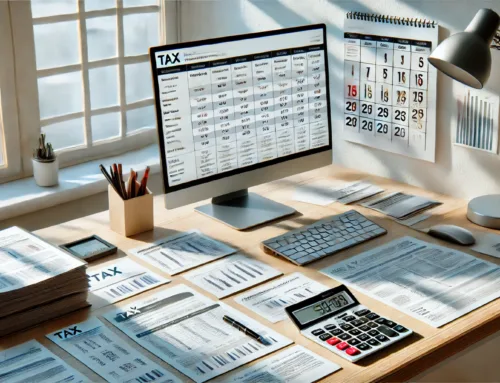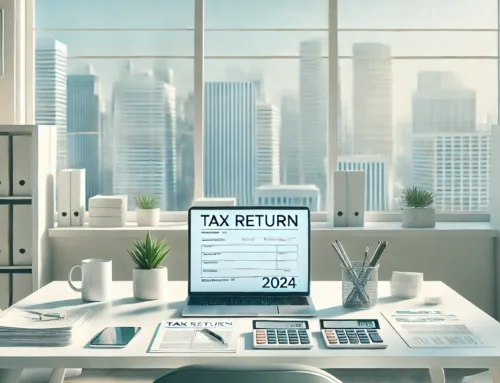With the ever-changing tax landscape, staying compliant requires constant vigilance and understanding of the Goods and Services Tax (GST) system. A significant number of new business owners are often confused about when and how to register for GST. The solution lies in a straightforward, step-by-step guide that demystifies the GST registration process. This article offers an easy-to-follow roadmap for registering for GST, from understanding the need to register based on your GST turnover to submitting your Business Activity Statement (BAS) and claiming tax credits.
Simplify your GST registration with TaxLeopard! Our app streamlines the process, offering features like Bookkeeping, Invoicing, BAS Lodgement, and more, all designed to ensure compliance and efficiency. Whether you’re new to the Australian market or a seasoned business owner, TaxLeopard makes GST registration effortless. Start your hassle-free journey today and focus on what truly matters – growing your business. Try TaxLeopard now for a seamless tax experience!
Understanding GST Registration
Who Needs to Register for GST?
Businesses in Australia must register for GST if their annual turnover meets or exceeds the GST threshold. This requirement applies regardless of your business type, including sole traders, companies, or partnerships. Even if you provide taxi or limousine travel, including ride-sourcing services like Uber, you’re required to register. Businesses can still choose to register for GST purposes even if their turnover does not reach the threshold, ensuring they account for GST on sales made since the date their registration is effective.
Benefits of Registering for GST
- Claim GST Credits: Registered businesses can claim credits for the GST included in the price of goods and services bought for their business.
- Compliance with ATO Requirements: Registering for GST helps businesses stay compliant with Australian Taxation Office regulations, avoiding penalties.
- Enhanced Business Credibility: Being GST registered can enhance your business’s credibility with clients and suppliers, showing that you’re a legitimate and serious enterprise.
- Access to Other Business Registrations: Registration enables businesses to apply for other necessary registrations and services through the Australian Securities and Investments Commission (ASIC).
- Financial Management: It allows for better financial management, as businesses can more accurately track their tax obligations and potential refunds.
Preparing for GST Registration
Documents Required:
To register your business for GST, you’ll need to apply for an ABN (Australian Business Number) first and possibly register a corresponding business name with the Australian Securities and Investments Commission (ASIC). Essential documents include proof of identity, details of your business or enterprise, and financial information. Ensure you have these documents ready to streamline the registration process.
Assessing Your GST Turnover:
Assessing your GST turnover is crucial to determine if you need to register for GST. If your business’s annual turnover is at or above the GST threshold, registration is mandatory. You should check each month to see if your turnover has reached the threshold. Remember, you must register within 21 days of reaching it. For businesses under the threshold, it’s still possible to register voluntarily, allowing you to claim GST credits on your purchases.
Steps for GST Registration
Creating an Account for GST Registration:
To start the GST registration process, you first need to apply for an ABN (Australian Business Number) if you haven’t already. This is essential as the ABN is required to register for GST. Businesses can register for GST online through the Australian Taxation Office (ATO) website. Ensure JavaScript is enabled in your browser for a smooth registration process.
If you’re operating under a trading name, verify it’s still valid and recognized by the Australian Securities and Investments Commission (ASIC). This step is crucial for all business types, including sole traders and those providing services like Uber.
Filling Out the GST Registration Form:
When filling out the GST registration form, include all necessary business details, such as your ABN, business or enterprise name, and contact information. Specify the date your registration is effective; this is often the date you expect your annual turnover to reach the GST threshold or earlier if you choose to register voluntarily.
Ensure you account for GST on sales and include the GST amount in your prices if you’re registered for GST. This form also requires you to detail your business activities and estimate your annual turnover, crucial for determining your GST obligations.
Submitting Your GST Registration:
After completing the GST registration form, review your details carefully to avoid common mistakes that could delay the process. Submit your application through the ATO’s online services. Typically, you must register within 21 days of becoming eligible, such as when your turnover exceeds the GST threshold or if you provide taxi or limousine travel, including ride-sourcing services, regardless of your turnover.
Once submitted, the ATO will process your application and, if approved, send you a confirmation with your GST registration details. Remember, from the date you’re registered, you need to include GST in your prices and can start claiming GST credits for purchases made for your business.
Conclusion
Successfully navigating the GST registration process marks a significant milestone for any Australian business. By securing your ABN, understanding your GST turnover, and completing your registration within the stipulated 21 days, you’re not just complying with the ATO; you’re also positioning your business for financial health. Remember, registering for GST allows you to claim GST credits on your business-related purchases and requires you to include GST in your invoices.
With this guide, you’re now equipped to tackle GST registration confidently and ensure your business thrives in the Australian market. Have you encountered any challenges while registering for GST, or do you have tips to share from your experience?
FAQs
1. Can I register for GST if my turnover is below the threshold?
Yes, registration for GST is voluntary if your business turnover is below the threshold.
2. What is the GST turnover threshold?
The GST turnover threshold is $75,000 for most businesses and $150,000 for non-profits.
3. How long does it take to get registered for GST?
It can take up to 28 days to process your GST registration, but it’s often quicker if you register online.
4. Do I need an ABN to register for GST?
Yes, you need an Australian Business Number (ABN) to register for GST.
5. How do I submit my GST after registration?
After registering, you submit your GST via Business Activity Statements (BAS), which can be lodged online, by mail, or through a tax agent.





